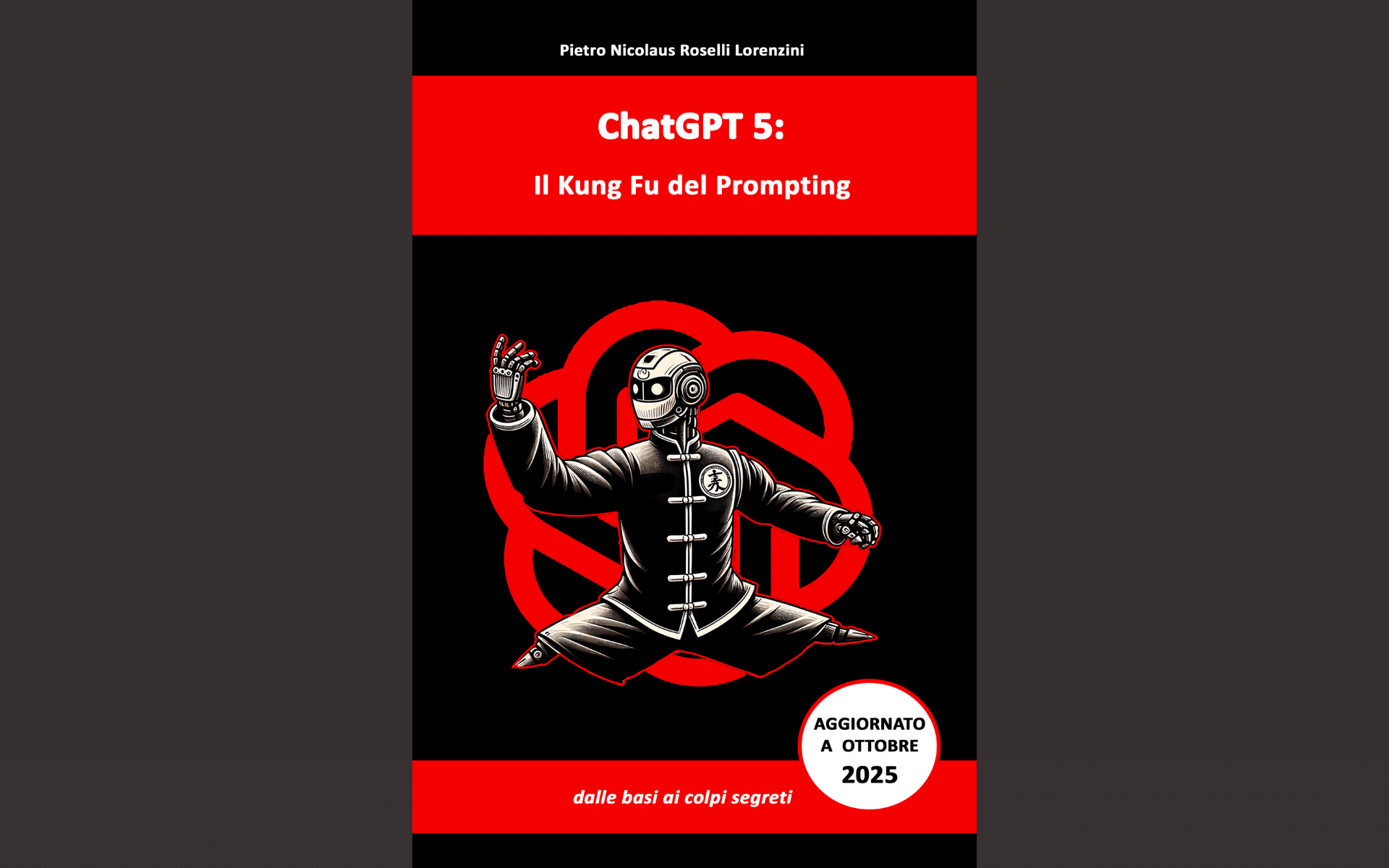
ChatGPT 5: Our “Kung Fu” of AI — Between Book, People, and Strategic Choices
AI can either complicate your days or give you back time. At PC Cube, we chose the latter: to make it a daily practice. That’s where our CTO Pietro Nicolaus Roselli Lorenzini’s book “ChatGPT 5: The Kung Fu of Prompting” was born. Not a manual of tricks, but a training journey: clear goals, quality criteria, responsibility for results. You open it and find a simple way to bring order — first to your mind, then to your processes — from the fundamentals of prompting to its use in teams and companies, covering files and documents, assisted coding, multimodality, memory, and small automations that make a real difference in everyday life.
The book speaks to anyone who feels the urge to turn curiosity into method: professionals who want reliable answers, managers who need to orchestrate people and objectives, power users and IT specialists who integrate AI without stopping delivery. The idea is that of a dojo: you try, you correct, you improve — with concrete examples, practical worksheets, and a playbook for the first ninety days that helps drive adoption without clashing with processes.
This approach reflects our vision. In recent years, we have seriously invested in Research & Development to make AI explainable, reliable, and measurable in production contexts: not just models, but methods, reusable assets, and a culture of quality that supports decisions day by day. We believe in widespread training: internal programs for technical and non-technical roles, workshops, and coding camps to spread AI across all corporate levels (development, project management, and account management) — same language, same criteria, same care for quality for everyone. That’s how a common ground is created: when people understand how to work together, AI stops being “magic” and becomes a better way of doing things.
To this framework we add the world of research.
With La Sapienza University, we are supervising four theses on AI and machine learning and preparing four papers for Tier A conferences: the bridge between lab and enterprise remains strong when ideas are measured, discussed, and improved. We like that what we validate in academia finds its way into projects: document analysis with clear metrics (accuracy, coverage, response time), assisted reverse engineering, test automation (unit/integration, automatic generation of test plans and cases), intelligent workflows, and knowledge automation with traceability and audit. We’re not after special effects: we aim for reliability, predictable timelines, and data security.
On this front also comes our decision to adopt ISO/IEC 42001, the standard for AI management systems. Our processes are currently under audit: it means aligning policies and roles, assessing impacts and risks, governing data and models, monitoring over time, and documenting everything so that it’s explainable. In other words: moving from “AI projects” to AI you can trust — aligned with business goals and sustainable in the long run.
If AI intrigues you but you want results, “ChatGPT 5: The Kung Fu of Prompting” is a good starting point because it explains our method clearly and practically.
If you want to understand how AI can truly enter your tools and projects — from document analysis to reverse engineering, intelligent workflows, and product integrations — let’s talk: we can explore use cases together, organize a workshop, or start a small pilot.
From the dojo to your context, without losing the thread.








